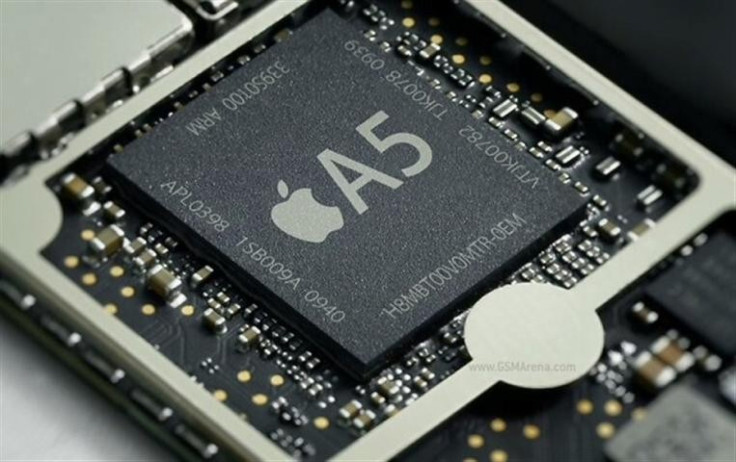Apple iPhone 5, iPhone 4S and many more due

Apple is in the throes of dealing a double whammy to Android as it plans to release two iPhones, the iPhone 5 and iPhone 4S in September.
Fortune quoted Deutsche Bank analyst Chris Whitmore as stating that Apple will release not one but two phones, an iPhone 5 which will come loaded with super specifications and an iPhone 4S, a cheaper version of iPhone.
Whitmore said: With Nokia and RIMM struggling, the time is right for Apple to aggressively penetrate the mid range smart-phone market (i.e. $300-500 category) to dramatically expand its [total addressable market] and market share.
The Deutsche Bank analyst believes that the iPhone 4S will be priced at $349, will be an unlocked model and will come with a pre-paid voice plan.
Apple iPhone 5 is speculated to have an 8MP camera, A5 processor, edge-to-edge display, tear-drop design, 3.7-inch curved glass screen, 1080p video playback and a SIM-less worldphone design.
Rumors of Apple launching a cheaper iPhone have been swirling the websphere since February, after WSJ reported that the upcoming iPhone, codenamed N97, will be half the size of an iPhone 4 and will cost half the price.
The launch of a cheaper iPhone compliments Apple's skimming and versioning pricing strategy. Apple has applied skimming and versioning pricing formula for its iPod line of products.
Under skimming a marketer sets a high price when the product is released and then lowers the price relatively, thus skimming the market of maximum revenue from various segments.
Apple follows this strategy with its iPod range of products. An Apple 10GB iPod Classic cost $399 in 2002; in 2003 and 2004 Apple priced its 10GB iPod at $299 and $249 in 2005. Currently a 160GB iPod classic costs $249. Thus Apple has been consistently reducing the price of iPod, which helps Apple to penetrate the market deeper by selling iPods at different price points.
Apple also follows versioning as a strategy by offering multiple versions of iPod with different features. A user has an option to buy a $49 iPod shuffle or a $399 iPod touch. Thus it covers various segment of customers by offering the cheapest version of an iPod for entry level customers, to offering a high-end model for users willing to pay a higher price.
In keeping with the above stated strategies Apple released a 4GB iPhone in June 2007 at $499 and an 8GB model for $599. Two months later it slashed the price of its 8GB model to $399 and discontinued its 4GB model.
Thus in view of the iPod pricing strategy Apple could launch not just an iPhone 5 and iPhone 4S but multiple versions of iPhone with different price points. In the current scenario most of the smartphones come at a price point of $199 with a contract with carriers. Apple armed with a cheaper iPhone can target the lower price category by offering a smartphone at affordable prices.
T-Mobile recently revealed that it has over a million unlocked iPhones on its network, with most of the iPhones being pre-iPhone 4 models. Since most of the iPhones on the network are older they lack hardware support to run on 3G or 4G networks. Currently unlocked iPhone users can avail 2G EDGE speeds on T-Mobile network.
The T-Mobile revelation underscores a key Apple phenomenon that users are willing to buy older Apple iPhones which run on outdated networks. Thus Apple can tap this burgeoning mass of buyers by offering iPhones with lesser specifications.
Apple recently unveiled its cloud-based locker facility the iCloud which allows users to store music, documents, calendars and apps in the cloud. It offers 5GB of free storage when a user signs up for iCloud. Apple can leverage on its cloud offering by pushing iPhone memory requirement to the cloud. Hence Apple can offer cheaper iPhones with lesser memory configuration. Currently iPhone 4 comes in 16/32 GB configuration.
Apple is presently targeting scale, a strategy which is underscored by Apple's decision to make unlocked GSM phones official. It is also reported that Apple Store employee can now unlock AT&T iPhone 4 SKUs and sell it as an unlocked version.
Unlocked versions of iPhone 4 cost $649 for 16GB and $749 for 32GB version. Apple is presently skimming the market for unlocked iPhones by offering the unlocked version of phones at the above stated price point. However Apple may bring down the price of these devices and may also offer variants of unlocked iPhone 4 - with lesser storage and lesser camera pixels - to gain market share.
Versioning and skimming pricing strategies are followed in a market where companies have a short-run market share like the smartphone market. Apple currently faces stiff competition from Android phones like Samsung Galaxy S 2, Motorola Atrix, Photon and HTC Sensation and Thunderbolt. In such a competitive scenario an iPhone 4S syncs perfectly with Apple's strategy to gain further market share.
© Copyright IBTimes 2025. All rights reserved.





















